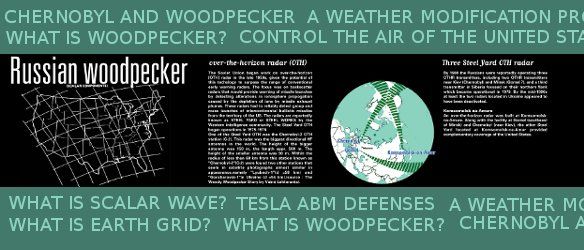What is Woodpecker ? The term Woodpecker refers to the high-power OTH radar which operated in Europe during the years 1976 – 1986. The signal from the Chernobyl-2 OTH station (C-2) is pulse-modulated at a rate of several times a second [most sources state 10 pulses per second], sounding like a woodpecker. The radar was observed using three repetition rates: 10 Hz, 16 Hz and 20 Hz. The most common rate was 10 Hz, while the 16 Hz and 20 Hz modes were rather rare. The pulses transmitted by the woodpecker had a wide bandwidth, typically 40 kHz. Also in the 2000s on the HF bands, over-the-horizon radars from other countries, using other pulse frequencies, have been audible. The 10-Hz Woodpecker was, and will be remembered as a unique phenomenon that generated more interference reports and speculations than any other radio emission. When it first began operations, the transmitter interfered with several communications channels, including emergency frequencies for aircraft on transoceanic flights. Subsequently the operational practice was modified so that the radar skipped these critical frequencies as it moved across its operational spectrum. When the transmissions were first detected in the West, some suggested that the Soviets were developing a new radio system for communicating with strategic submarines. Others suggested that it was designed to detect and track low-flying aircraft or missiles. Far less plausible theories extended to suggestions the Soviets were trying to modify the weather; experimenting with radio waves to control human behavior; or developing a weapon to shoot down nuclear-tipped missiles. (source : ABM AND SPACE DEFENSE A. Karpenko Nevsky Bastion, No. 4, 1999, pp. 2-47 and The Woody Woodpecker Story by Väinö Lehtoranta)
Download mapwoodpecker
